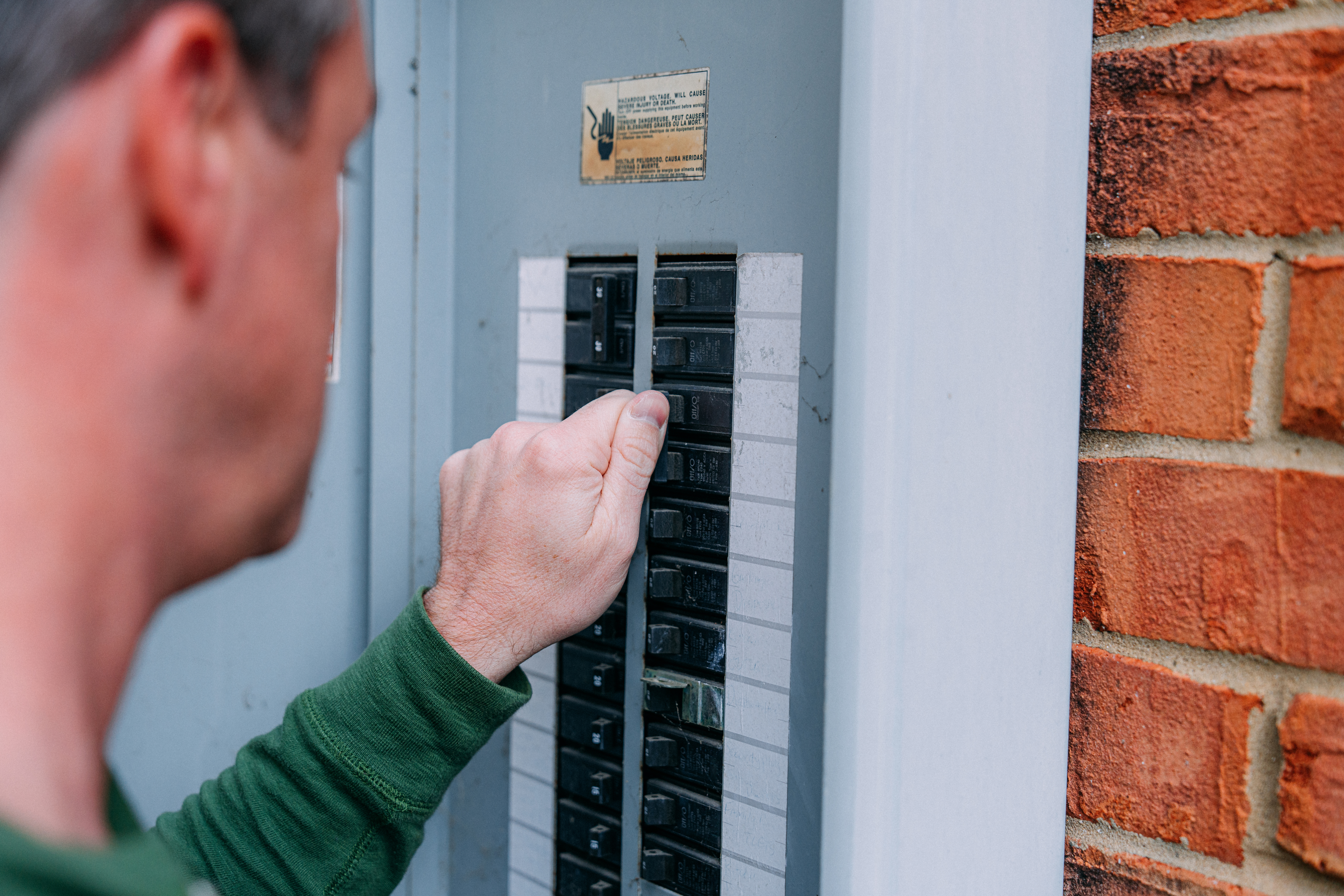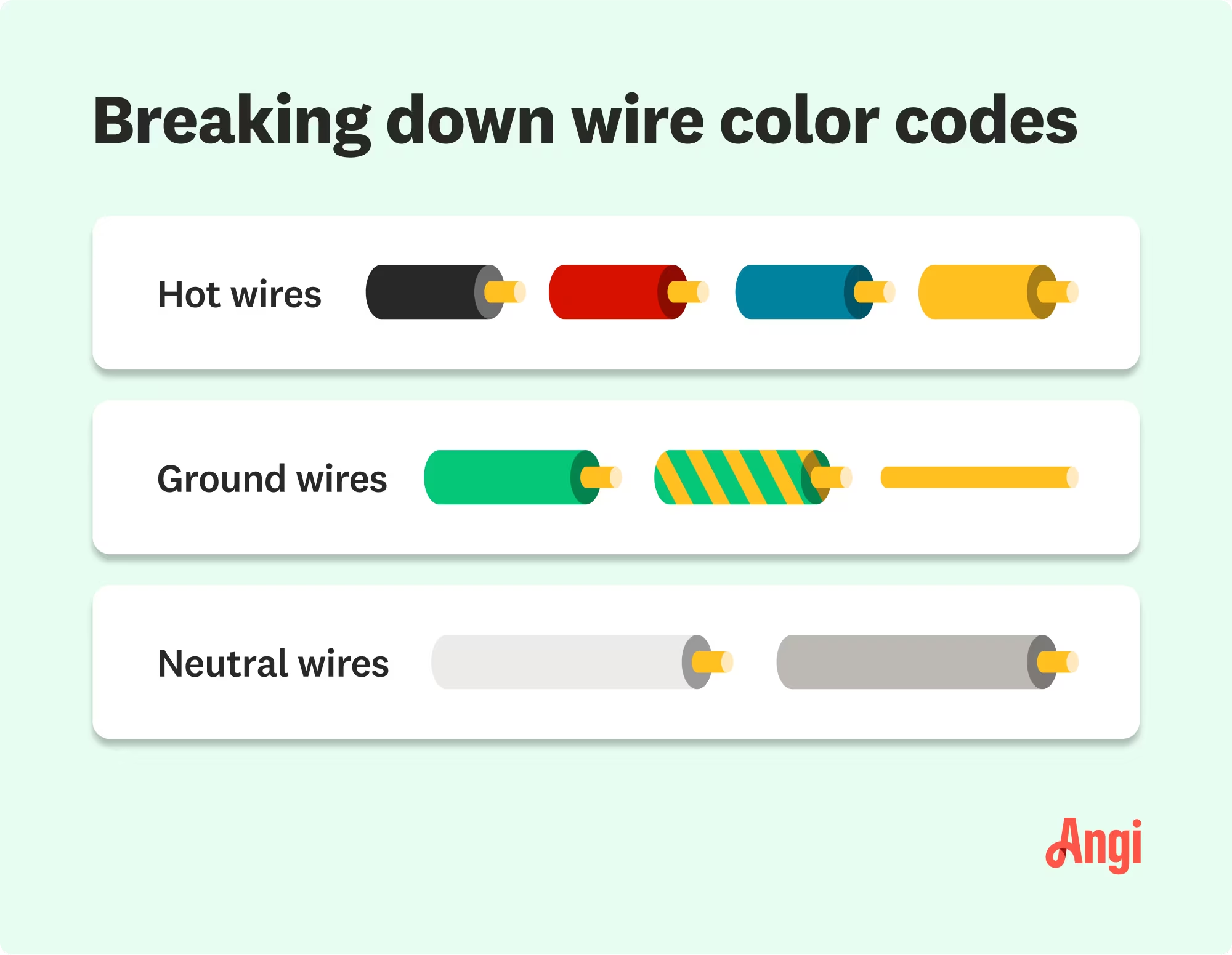
How much does electrical box replacement cost in Columbus, Ohio? Learn why this city may be more affordable and what factors the price.
A user's guide to (safely) restore power to your outlets


If you discover a damaged, burnt, or overheating electrical outlet, it’s time to learn how to change an outlet, even if you hire an electrician to complete the task. Electrical outlets not working properly can make it impossible to use household devices and appliances, so it’s best to replace them quickly.
However, electrical work and handling wiring can be hazardous to your home and personal safety. Strongly consider hiring a local electrician to change your outlets unless you have prior electrical experience. In this guide, learn how to change an outlet safely (and signs you should look for that warrant calling in a professional).
Before doing any electrical work, you must shut the power off to the outlets in question to protect yourself from electrical shock or electrocution. Working on live electrical circuits is extremely dangerous and can cause serious injury or even death.
Find your circuit breaker box—located away from the home interior in a garage, basement, or exterior wall.
Examine circuit breaker labels and flip off the breaker to the area where the outlet is located.
Give lights in that area a quick test to make sure power is really off.
After turning off the power to the outlet, you need to double check that it’s off.
Use a testing tool like a voltmeter, outlet tester, or multimeter to ensure the power is off.
Plug the testing device into the outlet and look at the readings. Make sure there is zero voltage.
If there are any voltage readings, you need to check your breakers again.
Use your screwdriver (most standard outlets need a flathead), and carefully unscrew the faceplate screws.
Gently pry off the faceplate and set it aside.

Keep in mind that this step requires electrical work that is best handled by a professional electrician.
To remove the outlet receptacle, unscrew the top and bottom parts and lift out gently. Inspect for any visible damage and determine if it needs to be replaced.
Taking the outlet receptacle out will allow you to decide whether it needs replacing, too.
Cracked, chipped, or slippery outlet receptacles probably warrant replacement, but it’s necessary if upgrading to a new type of outlet, like a grounded three-prong outlet.

Next up: the wire configuration.
Look for the inside screws connecting the receptacle itself to its base.
Gently unscrew the receptacle. It will still be connected to wiring, so don’t tug or jerk it.
Look for three (sometimes more) wires connected to contact points on the back of the receptacle. They are generally black, white and copper or green.
Observe contact points and make sure wires are connected to the right spots.
You can snap a photo to remember the wire placements, if necessary.
The back of the receptacle should have amp labels. The amps should always match the wires being used.
Most U.S. outlets and connected circuits are 15 amps. This should be matched by 14-gauge wire. Some receptacles are 20 amps, which require 12-gauge or 10-gauge wire.
If your wiring and receptacles don’t match, you need to replace the receptacle with a version with the correct amperage.
Contact a local electrician to inspect your electrical system and determine whether you need to replace wiring.
Loosen the contact points on your receptacle. They typically use tabs or screw-down contacts. Go slowly to avoid any damage.
When the contact points are open or loosen, carefully remove the wires from each point until the receptacle is free.
Set aside the old receptacle for disposal.
Examine the three outlet wires carefully. Now that they are disconnected, you can pull them slightly from the wall and inspect for signs of cracking, burning, and other damage.
If the wiring is damaged, use wirecutters to cut off the damaged portion. Be careful not to cut too much, as the wire still needs enough length to reach the receptacle.
Carefully strip the the covering off the wires to expose them (wirecutters typically have settings for different gauges). Many receptacles have information about how much to strip when exposing the wire, but you’ll want at least enough to fit into the contact.
Use your photo or labels on the receptacle, and re-attach wires to the contact points in reverse order.
Secure the contact points, ensure the connections are firm.
Screw the receptacle back into the wall until it is secure.

Turn the breaker for that room back on.
Use your plug-in voltmeter or tester to see if the outlet is functioning correctly. You can use a plug-in lamp or something similar if you don’t have a testing device.
If the outlet’s power seems to be working correctly, screw in the faceplate and dispose of the old receptacle.
If you run into problems, double check your breakers and contact points again.
If you observe these warning signs from your electrical outlets, it’s time to change them.
Age: If your outlets are more than 20 years old, they may be outdated and no longer meet current electrical safety standards. It's a good idea to have them inspected by a licensed electrician to determine whether to replace them.
Damage: If your outlets are damaged, cracked, or broken, they should be replaced. Damaged outlets can create a fire hazard and may not work properly.
Overheating: If your outlets feel hot to the touch, emit a burning smell, or cause sparks when plugging in or unplugging devices, it’s a clear indication there's a problem with the outlet or the wiring.
Loose or worn connections: If the prongs of plugs don't fit snugly into the outlet, or if the outlet feels loose when plugging in or unplugging devices, you likely need to replace it as it’s a safety hazard.
Outdated or unsafe design: If your outlets are not grounded or lack the GFCI protection required in wet areas such as bathrooms and kitchens, consider replacing them to ensure your safety.
Electricians typically charge between $9 to $35 per switch or outlet, plus the cost of materials. However, they may provide a price break for replacing a large amount of outlets in one job.
It’s best not to assume you can change an outlet yourself; working with electrical outlets can be dangerous if you aren't careful or lack experience. If the outlet is sparking, smoking, or giving off burning smells, put down your voltage tester and hire a local electrician immediately.
From average costs to expert advice, get all the answers you need to get your job done.

How much does electrical box replacement cost in Columbus, Ohio? Learn why this city may be more affordable and what factors the price.

How much does adding an electrical outlet cost in Columbus? Get details on average pricing, permit needs, and what affects the total cost.

How much does rewire house cost in Columbus? Learn the major factors that impact the price and how it can help increase your home's value.

If your light switch won’t turn off, try these troubleshooting tips to identify the problem before contacting a local electrician.

When installing a new 200-amp service panel, the right wire size is critical to ensuring sufficient amperage.

Planning out a 50-amp circuit? Selecting the right wire size is crucial. Find out how to determine the right 50-amp wire size.